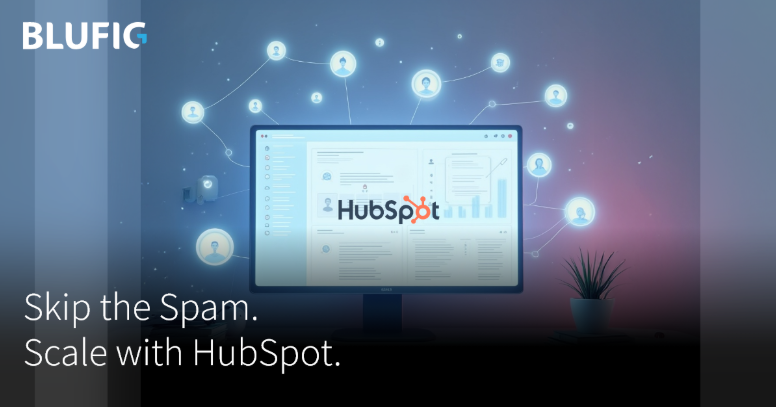In today’s competitive B2B landscape, companies are moving away from traditional, one-size-fits-all marketing strategies. Instead, they are increasingly adopting account-based marketing (ABM)—a highly focused, personalized marketing approach that targets specific accounts with customized messaging and content. ABM is revolutionizing the way B2B companies engage with high-value prospects and clients. Rather than casting a wide net to attract potential leads, ABM allows businesses to allocate resources and efforts toward key accounts that promise the highest returns.
This comprehensive guide will walk you through the fundamentals of account-based marketing, its importance for B2B businesses, the key components of an effective ABM strategy, and how it can benefit your organization. We will also discuss common challenges faced during implementation and explore how partnering with ABM service providers can streamline your marketing efforts. Whether you are new to ABM or looking to optimize your existing strategy, this guide will provide valuable insights.
What is Account-Based Marketing (ABM)?
Account-based marketing is a strategic approach that aligns marketing and sales efforts to target specific, high-value accounts. Unlike traditional marketing, which focuses on reaching a broad audience, ABM zeroes in on a select group of target accounts that are identified as ideal prospects based on their fit and potential value. Each account is treated as a “market of one,” and the messaging, content, and outreach are tailored to the unique needs and challenges of that account.
ABM emphasizes quality over quantity, prioritizing long-term relationships with high-value accounts. It aims to deliver personalized, relevant experiences that resonate with decision-makers within those target companies. As a result, ABM leads to more meaningful interactions, higher engagement rates, and increased chances of closing deals with key accounts.
Why is Account-Based Marketing Important for B2B Companies?
In B2B industries, sales cycles tend to be longer, and deals are often more complex. This is where account-based marketing becomes invaluable. By focusing on high-value accounts, businesses can drive greater efficiency and effectiveness in their marketing efforts. Here are several reasons why ABM is particularly relevant to B2B companies:
- Improved Personalization: ABM allows businesses to tailor their marketing efforts to the specific pain points and objectives of individual accounts. This personalized approach leads to higher engagement and conversion rates, as prospects feel that the content is directly addressing their unique challenges.
- Enhanced Sales and Marketing Alignment: ABM fosters a collaborative environment between sales and marketing teams. Both teams work together to identify target accounts, develop strategies, and engage key decision-makers. This alignment ensures that the messaging is consistent and relevant throughout the entire buyer’s journey.
- Higher ROI: Since ABM focuses on high-potential accounts, it delivers a higher return on investment (ROI) compared to broader marketing approaches. Businesses can allocate resources more efficiently, focusing their efforts on the accounts most likely to generate significant revenue.
- Greater Deal Sizes: In B2B industries, the value of individual accounts can be substantial. ABM is designed to build long-term relationships with these accounts, leading to larger deal sizes and greater lifetime customer value.
- Efficient Use of Resources: By focusing on a smaller, more targeted group of accounts, ABM ensures that marketing resources are used more effectively. Rather than wasting time and money on broad, unfocused campaigns, businesses can concentrate their efforts where they matter most.
How Does Account-Based Marketing Work?
Implementing an effective account-based marketing strategy involves several key steps that align marketing and sales efforts to achieve shared goals. Here’s how ABM typically works in practice:
- Identifying High-Value Target Accounts: The first step in ABM is to identify the accounts that offer the highest potential for revenue and long-term partnership. This involves analyzing factors such as company size, industry, revenue potential, and existing relationships. Ideal target accounts are those that align with your company’s goals and have a high likelihood of benefiting from your offerings.
- Researching Key Decision-Makers: Once target accounts are identified, the next step is to gather insights about the key decision-makers within those organizations. Understanding their roles, pain points, challenges, and goals is crucial for developing tailored marketing messages.
- Developing Personalized Messaging and Content: ABM focuses on creating highly personalized content that speaks directly to the specific needs and challenges of each target account. This could include account-specific whitepapers, case studies, or product demos that highlight how your solutions can address their unique problems.
- Coordinating Sales and Marketing Efforts: ABM requires close collaboration between sales and marketing teams to ensure a consistent and unified approach. Both teams work together to develop strategies, execute campaigns, and engage with decision-makers through various touchpoints.
- Multichannel Outreach: ABM campaigns typically leverage multiple channels to engage target accounts. This could include email, social media, content marketing, direct mail, and even personalized events. The goal is to reach decision-makers through the channels they use most frequently.
- Tracking and Measuring Results: ABM requires ongoing measurement to determine the success of campaigns. Key performance indicators (KPIs) include engagement metrics, pipeline velocity, account penetration, and revenue generated from target accounts. Regular analysis helps optimize future campaigns and refine the overall ABM strategy.
Key Components of an Effective ABM Strategy
Building a successful ABM strategy involves several critical components. Each of these elements plays a vital role in ensuring that your ABM efforts are targeted, effective, and aligned with your business goals:
- Target Account Selection: The success of an ABM campaign begins with selecting the right accounts. Use data-driven insights to identify high-potential accounts that fit your ideal customer profile. Consider factors such as industry, company size, and revenue potential when selecting target accounts.
- Personalization at Scale: While ABM requires personalized content, it’s important to strike a balance between customization and scalability. Develop content that can be easily tailored to different accounts without sacrificing efficiency.
- Data-Driven Decision Making: Data plays a crucial role in every aspect of ABM, from account selection to campaign optimization. Use analytics to track engagement, measure campaign effectiveness, and refine your approach based on real-time data.
- Sales and Marketing Collaboration: ABM requires close alignment between sales and marketing teams. Both teams should work together to identify target accounts, develop strategies, and engage with key decision-makers.
- Technology Integration: Marketing automation tools, customer relationship management (CRM) systems, and analytics platforms are essential for executing and tracking ABM campaigns. These tools help manage outreach, track engagement, and measure results.
- Multichannel Engagement: Successful ABM campaigns reach decision-makers through multiple touchpoints. Use a combination of email, social media, direct mail, content marketing, and events to engage with target accounts.
The Benefits of Account-Based Marketing
ABM offers numerous benefits for B2B companies looking to drive growth and improve marketing efficiency. Some of the key benefits include:
- Higher Conversion Rates: By focusing on high-value accounts and delivering personalized content, ABM leads to higher conversion rates compared to traditional marketing approaches.
- Increased Revenue: ABM allows businesses to focus their efforts on the accounts that are most likely to generate significant revenue. As a result, ABM often leads to larger deal sizes and higher revenue potential.
- Improved Customer Relationships: ABM focuses on building long-term relationships with key accounts. By providing personalized, relevant experiences, businesses can strengthen their relationships with existing clients and improve customer satisfaction.
- Shortened Sales Cycles: ABM helps accelerate the sales process by providing sales teams with the insights and content they need to engage decision-makers effectively. This leads to faster decision-making and shorter sales cycles.
- More Effective Resource Allocation: ABM enables businesses to focus their marketing resources on high-value accounts, ensuring that time, money, and effort are used more efficiently.

Challenges of Implementing ABM
While ABM offers significant advantages, it also comes with its own set of challenges. Here are some common obstacles that B2B companies may encounter when implementing an ABM strategy:
- Resource-Intensive: ABM requires a significant investment of time, resources, and personnel. Creating personalized content for each target account can be labor-intensive, and businesses may need to invest in technology to manage and track campaigns.
- Sales and Marketing Alignment: ABM relies on strong collaboration between sales and marketing teams. If these teams are not aligned or do not communicate effectively, it can lead to inconsistent messaging and missed opportunities.
- Measuring Success: Tracking the success of ABM campaigns can be more complex than traditional marketing methods. Metrics such as account engagement and pipeline influence are harder to measure and may require advanced analytics tools.
How ABM Services Can Help B2B Companies
For companies that lack the resources or expertise to manage ABM in-house, partnering with an agency that offers ABM services can be a game-changer. ABM service providers specialize in helping businesses develop and execute personalized ABM strategies that drive results.
Here’s how ABM services can benefit your business:
- Expert Targeting: ABM service providers use advanced analytics and data-driven insights to help you identify and prioritize the accounts with the highest potential.
- Content Development: Creating personalized content is a core component of ABM. ABM service providers can assist in developing customized content that resonates with your target accounts.
- Campaign Management: Managing ABM campaigns across multiple channels can be challenging. ABM service providers offer end-to-end campaign management, from strategy development to execution and tracking.
- Analytics and Reporting: ABM service providers use advanced analytics tools to measure campaign performance and provide actionable insights for optimization.
Conclusion
Account-based marketing is a powerful tool for B2B companies looking to target high-value accounts, build stronger relationships, and drive revenue growth. By aligning marketing and sales efforts and focusing on personalized, relevant experiences, businesses can engage decision-makers more effectively and close more deals.
If you’re ready to implement a successful ABM strategy, Blufig offers comprehensive ABM services designed to help you achieve your goals. Learn more about our offerings, or get in touch with us to start your ABM journey today.





